Recipes from Adam Liaw's Asian Cookery School
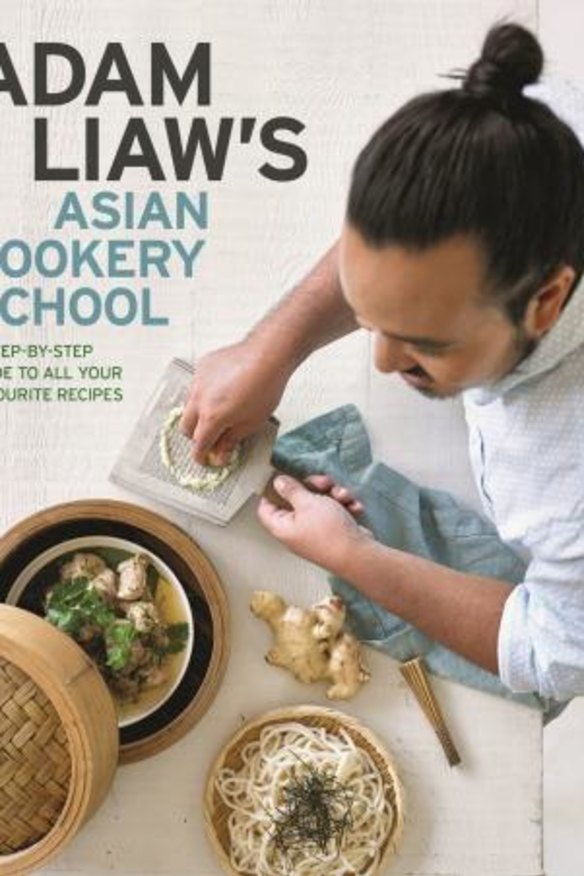
If you've always wanted to make Asian greens taste like the dish you order in a Chinese restaurant, here's how. Plus three other recipes from Adam Liaw's new cookbook.
Oiled greens
Serves 4 (as a shared dish)
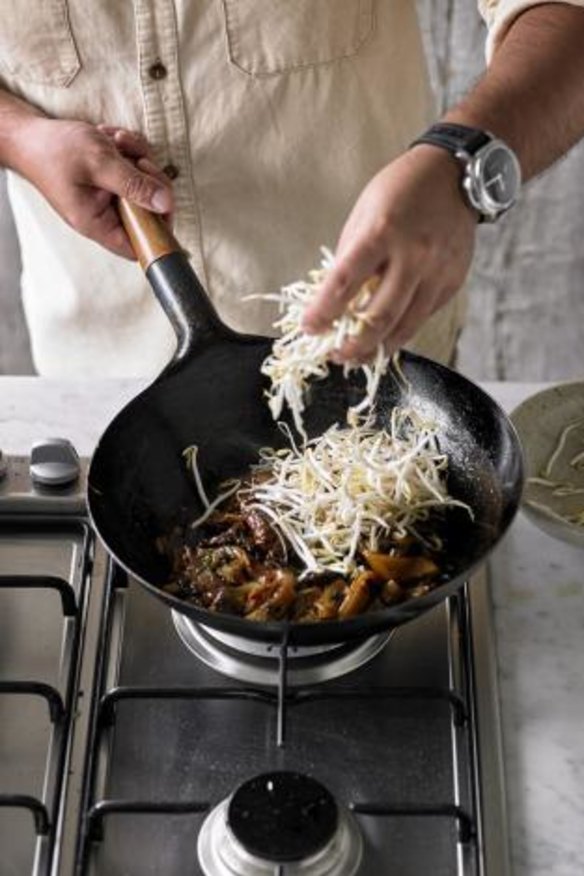
Preparation time: 5 minutes
Cooking time: 5 minutes
INGREDIENTS
1 bunch Chinese broccoli (gailan) (about 250g)
2 tbsp salt
1 tbsp vegetable oil
Oyster sauce
1/4 cup oyster sauce
1/4 cup chicken stock or water
1/4 tsp cornflour mixed with 1 tbsp stock or water
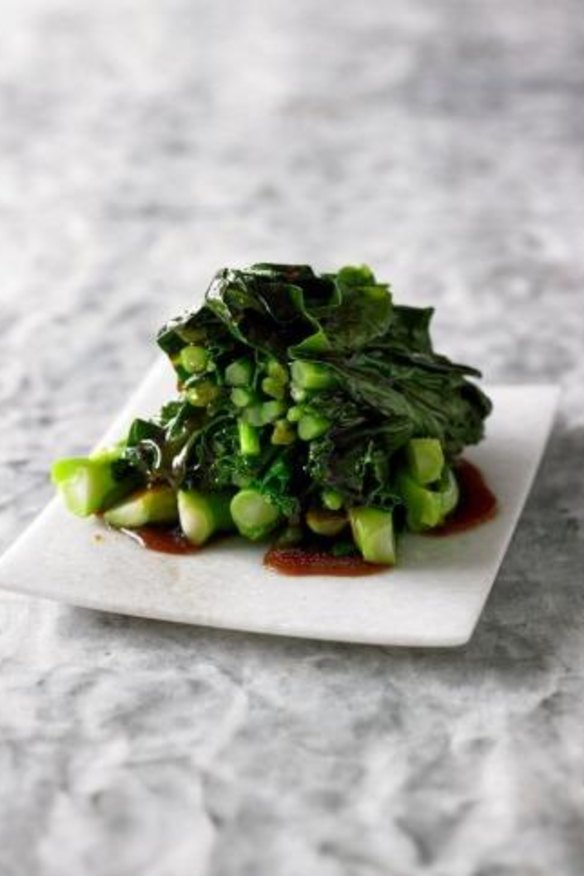
METHOD
1. Trim the Chinese broccoli of any dry ends and rinse well in cold water. Cut into 10cm lengths, grouping together the thick stalks, thin stalks and leaves separately. Split any very thick stalks in half lengthways.
2. Bring 2 litres of water to a rolling boil and add the salt. Add the thick stalks and boil for about a minute, then add the thin stalks and the leaves on top. Pour over the vegetable oil and boil for a further 2 minutes, occasionally shaking the greens in the water with tongs or chopsticks to coat them in the oil and to dissolve the salt. Remove from the water and drain well.
3. For the oyster sauce, bring the oyster sauce and stock to a simmer, then add the cornflour mixture. Stir until thickened then remove from the heat. Serve the greens as they are, or with some of the oyster sauce poured over the top.
NOTES: This process can be applied to any Asian vegetable, just adjust the cooking time accordingly. This is a great way to cook Western vegetables as well. You can even replace the vegetable oil with butter.
Beef chow fun
Serves 2
This classic Cantonese fried noodle dish is about as basic as it gets, but once you've become comfortable with it you can apply the same principles to making almost any fried noodles in your wok.
160g beef rump or topside, very thinly sliced
2 tbsp peanut oil
3 thin slices ginger, bruised
2 cloves garlic, peeled and minced
¼ tsp salt
4 thick spring onions, trimmed, cut into
7cm lengths and sliced vertically
500g fresh wide flat rice noodles
1 tbsp dark soy sauce
1 tbsp soy sauce
A good pinch sugar
A good pinch white pepper
1 tbsp Shaoxing wine
2 cups beansprouts
chillies in soy sauce, to serve
Marinade
2 tsp dark soy sauce
2 tsp Shaoxing wine
1 tsp sesame oil
1 tsp cornflour
Mix the meat with the marinade ingredients and set aside for at least 10 minutes. Heat a wok over high heat and add half the oil. Fry the meat until well browned and remove from the wok. Brush out the wok if necessary. Add the remainder of the oil, the ginger, garlic, salt and spring onions, tossing until fragrant. Add the rice noodles, toss and allow to sit for a minute over heat without tossing, then add the soy sauces, sugar and pepper and pour in the Shaoxing wine around the edges of the wok. Toss for a further minute then add the beef. If the wok looks a little dry you can add some water, stock or oil to moisten. Toss occasionally until the noodles soften, then add the beansprouts and toss until they soften too. Serve with some chillies in soy sauce.
Notes: A two-person serve of this dish is about the most that should be cooked in a domestic wok in one batch to still achieve good wok hei. Beansprouts are often included in dishes with noodles. The long, thin shape of beansprouts matches the noodle, but provides a crunch to give the dish a better texture. When frying meat and vegetables with rice or noodles, the carbohydrate is the main element of the dish. Don't add too many other ingredients. A good rule of thumb is that the meat should weigh no more than one-third of the weight of the noodles.
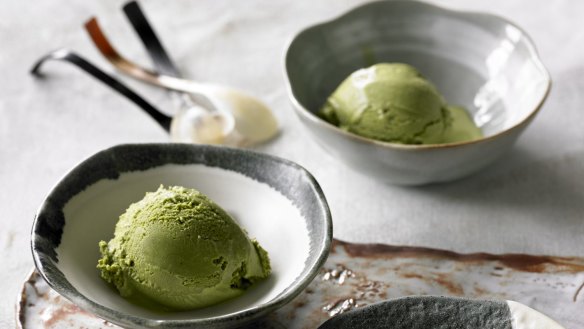
Green tea ice-cream (Matcha aisu)
Makes about 1 litre
Although green tea ice-cream is now found all over Japan and in Japanese restaurants abroad, it only really became popular in the 1990s. It's simple to make at home.
400ml full-cream milk
300ml pouring cream
6 egg yolks
½ cup caster sugar
20g green tea powder (matcha)
Combine the milk and cream in a small saucepan and bring to a simmer, then remove from the heat. Beat the egg yolks and caster sugar until pale and combined, then beat in the green tea powder. Slowly whisk the hot milk mixture into the egg mixture, then strain everything back into the saucepan and stir over medium heat until the mixture coats the back of a spoon. Transfer to a bowl and cool first to room temperature, then in the fridge for about an hour until chilled. Churn in an ice-cream machine according to the manufacturer's instructions, then set in the freezer for at least two hours.
Notes: You can make ice cream without an ice-cream machine – just place the mixture in the freezer and whisk it vigorously every 30 minutes until it sets too firmly to whisk. It will take about four hours to freeze. Green tea powder is available from the Japanese section of Asian grocery stores. Don't try to substitute ordinary leaf green tea.
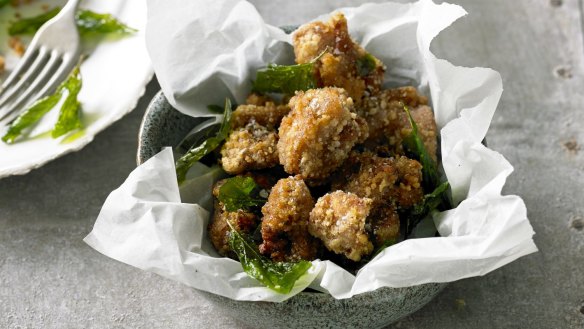
Popcorn chicken with basil (Yan su ji)
Taiwanese food is a great mix of local dishes with influences from China, Japan and south-east Asia. Popcorn chicken is a popular street food in Taipei, and once you try it you'll see why. The crunchy texture of the sweet potato flour coating is incredible.
600g boneless chicken thigh fillets,
preferably skin-on, cut into 3cm pieces
3 cloves garlic, peeled and minced
1 tsp grated ginger
1 tbsp soy sauce
1 tbsp Shaoxing wine
2 tsp sugar
½ tsp Chinese five spice powder
1 cup sweet potato flour
2 litres oil, for deep-frying
1 cup loosely packed Thai basil leaves
Spice salt
1 tbsp salt
¼ tsp Chinese five spice powder
¼ tsp white pepper
A pinch chilli powder
Combine the chicken with the garlic, ginger, soy sauce, Shaoxing wine, sugar and five spice powder and set aside to marinate for at least 10 minutes. Coat the chicken pieces in the sweet potato flour and shake off any excess. Heat the oil in a wok or saucepan. When the oil reaches 150C scatter the basil leaves into the wok and stir for about 20 seconds, or until the basil turns translucent. Remove the basil from the wok and drain on absorbent paper. Increase the heat of the oil to 170C and fry the chicken in batches for about three minutes, or until golden brown and cooked through, regularly skimming any floating flour bits from the oil. For the spiced salt, mix the ingredients together and toast in a dry frypan over low-medium heat for two minutes, or until fragrant. Toss the chicken with the fried basil leaves and season with a good pinch of the spice salt.
Serve immediately.
Notes: Sweet potato flour is sometimes sold as "tapioca flour". It's available from Asian grocers. The Taiwanese variety is a coarse-textured but light flour that gives the characteristic crumbly texture to this dish. You could substitute cornflour or rice flour but it won't quite be the same. When deep-frying, skimming oil is a really important step that many people overlook. It preserves the oil by keeping it clear, and stops burnt flavours creeping in to later batches.
Recipes extracted from Adam Liaw's Asian Cookery School, published by Hachette, $49.99.
Appears in these collections
The best recipes from Australia's leading chefs straight to your inbox.
Sign upFrom our partners
Original URL: https://www.smh.com.au/goodfood/recipes/recipes-from-adam-liaws-asian-cookery-school-20150912-gjkt47.html